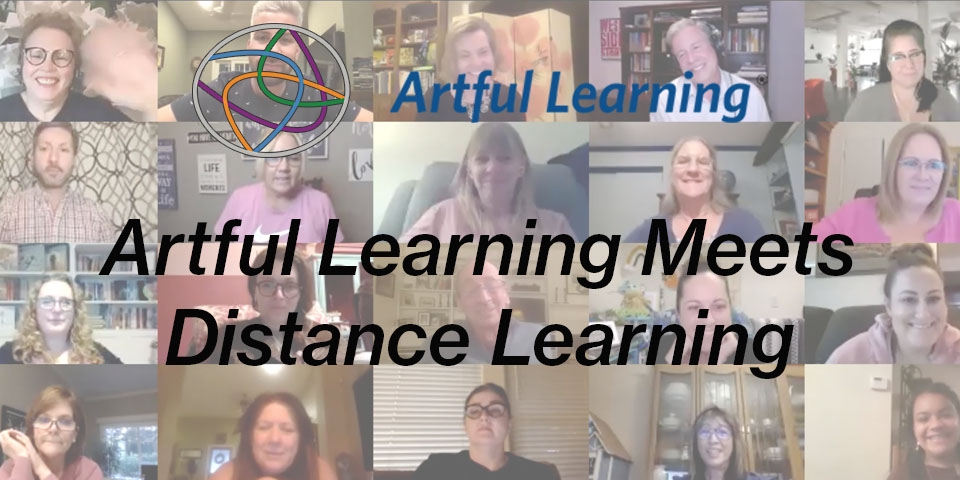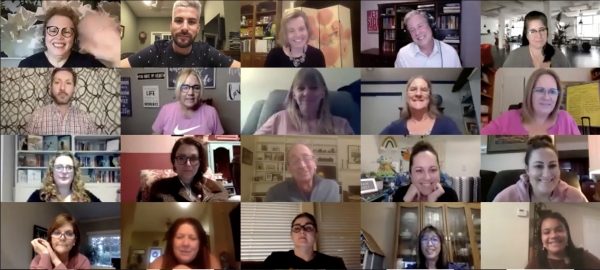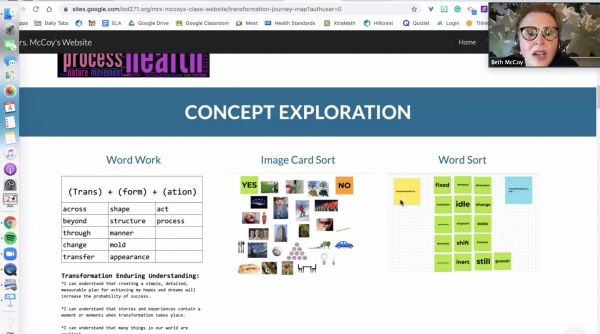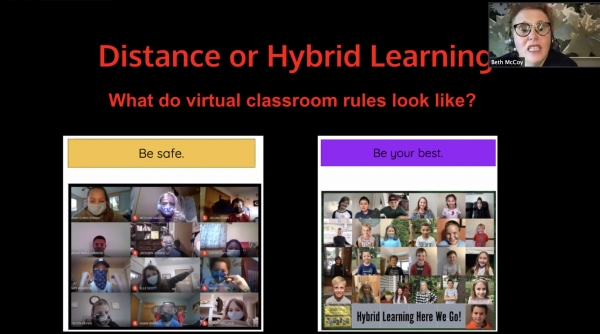Artful LearningBlogBlog 18: Artful Learning Meets Distance Learning

November 11, 2020
Artful Learning Meets Distance Learning

Last week, Artful Learning launched its first monthly virtual learning presentation led by Beth McCoy, an Advanced Trainer, from Hillcrest Community School. This presentation was called “Artful Learning Meets Distance Learning” in order to reflect the realities many educators are facing across the country during the COVID-19 pandemic. Some of the presentation’s goals were to help teachers adjust to their lesson plans if they move to the hybrid model or remain completely in the virtual learning environment. Our audience of educators represented many different states and guidelines from California, New York, Colorado, Minnesota, Tennessee, and Florida—just to name a few. In order to move forward with the unique circumstances we are all facing, McCoy presented us with the following considerations and the 4 “how’s” on confronting them.
One of the first points that McCoy stressed was to “consider your original plans” and “how they can adapt to the current situation.” Obviously, the “original plans” would entail in-person learning within a classroom full of students. But she believes that one must ask themselves “what would your students be experiencing? What would they be inquiring about? What would they be creating? What would they be reflecting upon?” McCoy provided a prime example on the first Unit of Study she typically uses at the beginning of the school year and it was on “transformation.” One of the first assignments she introduced was a series of self-portraits that ranged from realistic to conceptual using different materials she provided in the classroom; however, providing the materials was no longer feasible since her class started virtually. McCoy had to transform her assignment, adapt to the situation, and allow her students to use materials found at home.

The second point that McCoy highlighted was to “consider your schedule” and “how it can adapt to the current situation.” She emphasized that adhering to a set schedule is not always necessary and one can be creatively organized to make it work best for them. While her class was learning remotely, McCoy strongly preferred to divide her schedule into three 30-minute increments with smaller groups of students. This was because she was able to teach the same lesson three times in a row and had a better capacity to notice the small, yet important, things about her students. Some of these things included focusing on their digital competencies, their participation, their concentration, and their emotional well-being. She could also see if whether or not they were left-handed, if they could maneuver the online platforms with ease, and who was struggling to keep up or follow directions. When the classroom eventually turns into hybrid-learning, McCoy stressed the importance of considering the schedule and prioritizing the in-class tasks to the ones that truly demand it.

The third point that McCoy spoke about was to “consider your time” and “how it can adapt to make every minute count.” She explained that one needs to know how they are going to use their time within their schedule and how can they take advantage of every moment they have. She even noticed that some of her students did not yet have the stamina they would normally have at this time of the year and that it is important to consider one’s time with this in mind. In distance learning, it is crucial to stick to the plans and keep them tight so no one becomes sidetracked. She also highly recommended recording any demonstrations using Screencastify in advance so educators can use that time to focus on the students and be present with them. McCoy also stressed previewing the daily schedule to the class during their morning meeting so the students can gather supplies and be fully prepared (and excited) for the tasks ahead. If an educator does not have a morning meeting with their class, McCoy strongly suggested creating time for one.

The fourth and last point McCoy brought attention to was to “consider your documentation” and “how it can be accessible to students and families during distance learning and beyond.” One example she made was having the class Journey Map available on her Google website for the students, parents, and faculty members to see. This was something that McCoy learned how to digitally document so everyone could see the books they read, their Art-Based Skills and Strategies, the inquiry they experienced, and the art they created. Additionally, she emphasized the importance of making universal rules for virtual and in-person learning—and making them readily available on the class website. Some of these rules include “be a friend, be a worker, be listener, be safe, and be your best.” McCoy suggested letting the students learn the rules by participating with related activities on Jamboard to encourage engagement.

Beth McCoy’s presentation on “Artful Learning Meets Distance Learning” was very informative for all the participants who tuned in from across the country. Her tips and tricks on how to navigate the digital sphere with ease and efficiency was much needed during uncertain times—especially with educators who are not sure how the remainder of the school year will turn out. Artful Learning looks forward to providing more virtual learning presentations that address some of the unique challenges we are all facing while offering workable solutions to them. Stay tuned for what we have in store next!